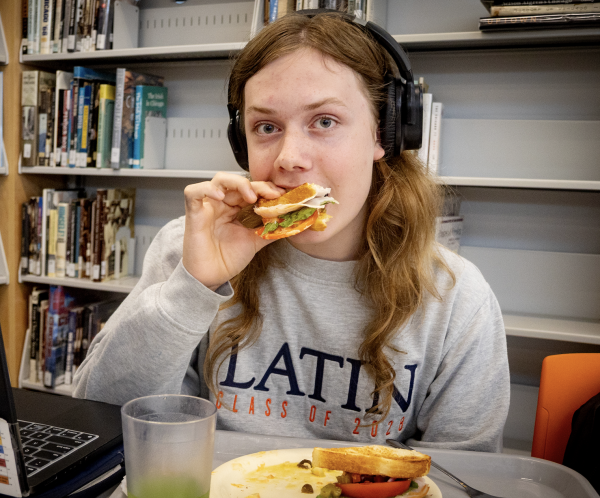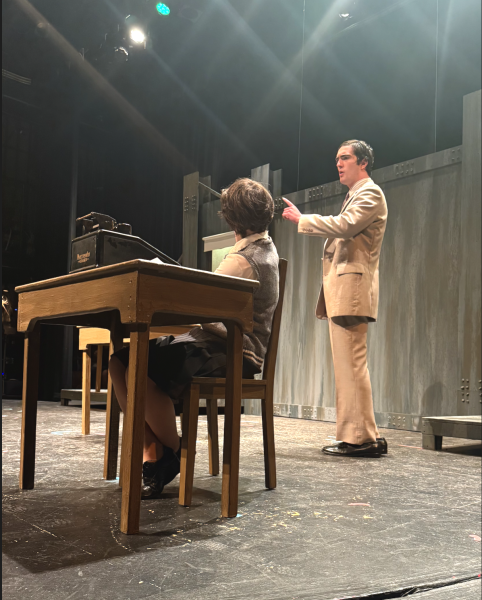The Middle School E-Learning Experience
April 3, 2020
On Monday, March 16th, at 8:00 am, high schoolers were sound asleep, blissfully wallowing in the lack of a wake-up time. Unfortunately, middle schoolers could not enjoy the extra sleep because they were attending their first remote learning classes, at the unbearable time of 8:00 in the morning. In contrast to the normal rush of Monday mornings, which usually consist of an early start, cereal, and one or two technical difficulties, many houses were still sleeping, except for younger students, who only had to roll out of bed and turn on their iPads to attend school that day.
None of us expected this dramatic and unprecedented turn of events; two months ago, no one would have believed that Latin was going to be closed due to a global pandemic. But here we are, and we are poised to continue this dystopian way of life for many weeks or even months to come. All of us have been social distancing and staying at home, and while no school, sweatpants, and Netflix binges would usually sound appealing, now everyone is longing for this introverted way of life to end.
So amidst all of this, how could school continue? How can we get an education if we can’t leave our houses? We all experienced a sneak peek of e-learning the week of March 16th, where we had assignments and maybe a few online class meetings to attend. But that was just a week of assignments, a week of homework, not an online reflection of what normal school will look like online for the long term. However, Latin’s middle school previewed a more formatted, organized schedule of e-learning that mirrors the format of normal school, and the high school will adopt some aspects of this plan once spring break ends.
Every day, at 8:00 am, middle schoolers logged into RomanNet and looked at their schedules for the day. They were normal middle school schedules, with class blocks, breaks, and even lunchtime, but instead of physically attending classes, they all took place virtually. The students would join class calls on Google Classroom, a tool that many high schoolers used in their brief exposure to e-learning, and if the class wasn’t having a call that day, they would spend class time doing assignments that were posted on RomanNet.
Though the middle school’s approach to e-learning is similar to an actual school day in regards to having a schedule, according to Marlo Leik, “you’re not getting taught anything, you are just doing work.” She believes that students cannot be as immersed in the material while they are sitting at home in pajamas versus sitting in a classroom. When I asked her preference between the high school’s more laid back approach versus the middle school’s more structured one, she responded that she would prefer the freedom from a schedule the high school’s e-learning gives the students. When asked why, she sighed, rolled her eyes, and said, “I just want to sleep in!”
My sister is not alone with her opinions on this new – some would say strange – way of learning and attending school. Seventh-grader Juliette Katz says that e-learning was “different and weird…it was definitely harder to [be] motivated considering I was on FaceTime.” Many students shared the opinion that learning at home is less beneficial because of the lack of focus the comfort of your own home might bring.
However, other students liked this atypical approach. Cristiano Tricoci, also a seventh-grader, said that he “loved e-learning because it felt like a normal school day…the teachers gave us fun things to do as a class online.” Despite differences in opinion, everyone can agree with Juliette, when she said that e-learning “is not ideal, but the school is doing their best.” And their best is all anyone can do during these trying times.
Even if the high schoolers’ exact schedule for e-learning remains somewhat unclear, one thing is certain: once the end of spring break rolls around, waking up at lunchtime, living in sweatpants, and turning your brain to absolute mush will all subside. While all normalities are on hold, at least we can feign the comfort and familiarity of school within this uncharted territory.






















































